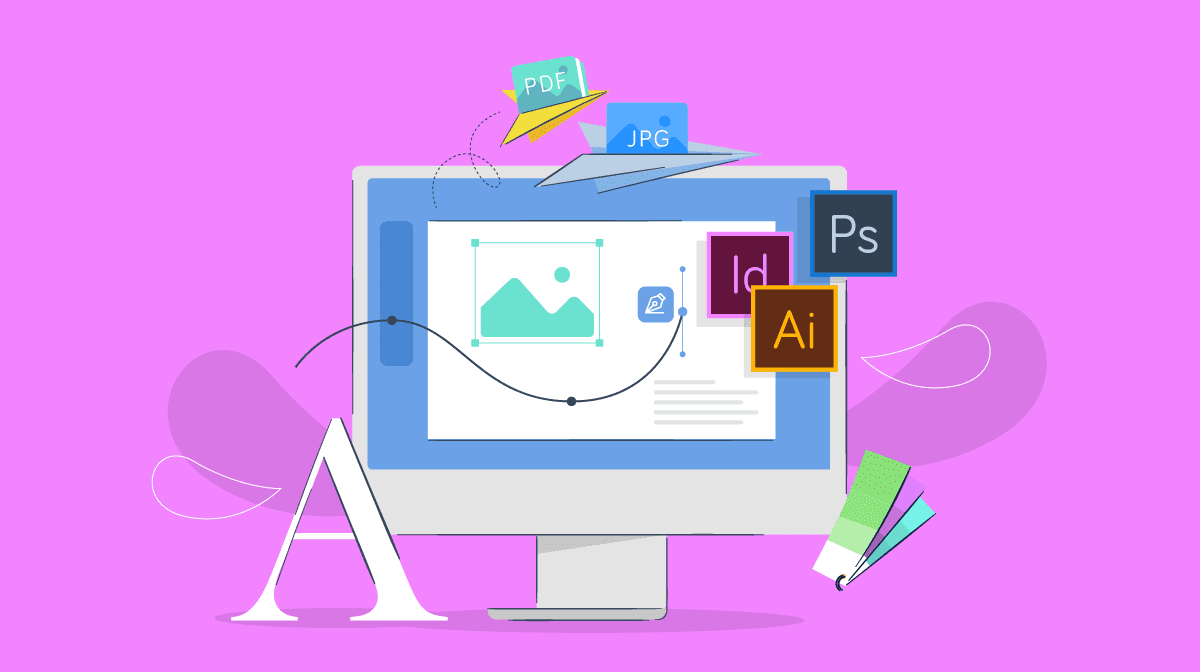Integrating Traditional Aboriginal Art into Modern Graphic Design in Melbourne

Introduction
In Melbourne, a city celebrated for its dynamic art scene and cultural diversity, a captivating fusion is unfolding. Here, the ancient wisdom and aesthetic of traditional Aboriginal art is being skillfully interwoven with the bold and innovative spirit of modern graphic design. This intersection is not merely an artistic endeavor; it represents a bridge between epochs and cultures, merging the deeply spiritual and historically rich art of Australia’s Indigenous people with the contemporary, Graphic design’s digital blend. As we delve into this unique blend, we uncover not only a new aesthetic language but also a profound respect for cultural narratives, fostering a dialogue that transcends time and art forms. This union in Melbourne’s design world is more than an artistic trend; it’s a testament to the city’s ongoing commitment to cultural inclusivity and creative innovation.
The Essence of Traditional Aboriginal Art
Unveiling the Spiritual and Cultural Depth
Aboriginal art, a cornerstone of Australia’s heritage, is not just an art form; it’s a narrative of life, history, and spirituality. This ancient art, deeply rooted in the Dreamtime, tells the stories of the land and its people. Each pattern, symbol, and color is a lexicon of the Aboriginal worldview, offering insights into a culture that has thrived for millennia.
Symbols and Their Meanings in Aboriginal Art
In Aboriginal art, symbols are more than mere artistic expressions. They serve as a bridge between generations, carrying tales and traditions. For example, circles might represent gathering spots, while animal tracks can denote the movements of ancestral beings. Understanding these symbols is key to appreciating the art’s depth and complexity.
The Intersection of Two Worlds
Blending Ancient Narratives with Modern Aesthetics
The convergence of Aboriginal art and modern graphic design in Melbourne is a dance of tradition and innovation. This fusion brings a new dimension to graphic design, infusing it with a richness of storytelling and a palette of profound cultural significance.
Impact of Aboriginal Art on Modern Design Practices
The integration of Aboriginal motifs into graphic design reshapes the way designers approach their craft. It encourages a deeper engagement with symbolic language and cultural narratives, paving the way for designs that are not only visually compelling but also rich in meaning and context.
Embracing Cultural Sensitivity in Design
As this fusion evolves, it’s crucial for designers to approach Aboriginal art with respect and understanding. This means not only appreciating the aesthetic value of the art but also recognizing its cultural and spiritual significance.
Contemporary Applications in Melbourne’s Design Scene
Examples and Case Studies
Several Melbourne-based designers and projects have successfully blended these art forms, creating pieces that are both visually stunning and culturally significant.
The Essence of Traditional Aboriginal Art
Delving Deeper into Aboriginal Art’s Rich Legacy
The depth of traditional Aboriginal art extends far beyond its visual appeal, embodying a rich tapestry of stories, spirituality, and cultural identity. This art form is not just a creative expression but a vital link to the history and heritage of Australia’s Indigenous peoples.
The Storytelling Power of Aboriginal Art
Aboriginal art is a storytelling medium, where each dot, line, and color carries a piece of history, a legend, or a sacred lore. These elements are not random; they are carefully chosen symbols that communicate the artists’ connection to their land, their ancestors, and their traditions. Understanding the narrative power of Aboriginal art is essential for anyone looking to integrate it into modern graphic design, as it adds layers of meaning and cultural significance to their work.
Symbolism and Spirituality in Aboriginal Art
The spiritual dimension of Aboriginal art is profound. It’s not just art for art’s sake; it’s a spiritual practice, a way of maintaining a connection to the Dreamtime, the sacred time of creation according to Aboriginal mythology. The symbols used in Aboriginal art, such as animals, landscapes, and ancestral figures, are more than decorative. They are a visual language that communicates the values, beliefs, and history of Aboriginal communities.
The Intersection of Two Worlds
Creating a New Artistic Language
When the ancient art form of the Aboriginal people intersects with modern graphic design in Melbourne, a new artistic language is born. This fusion is a celebration of diversity, a blend of the old and the new, creating something unique and powerful.
Cultural Respect and Artistic Innovation
In this intersection, the key is to balance cultural respect with artistic innovation. It involves understanding the deep cultural roots of Aboriginal art and thoughtfully integrating these elements into modern design in a way that honors their origins and meanings.
The Role of Aboriginal Art in Contemporary Design
This artistic influence is compelling designers to venture beyond the traditional confines of their craft. It invites them to create designs that are visually stunning and, more importantly, imbued with cultural depth and resonance. This integration does more than just catch the eye; it speaks to the heart, weaving stories and meanings that resonate on a deeper level.
Conclusion
The integration of traditional Aboriginal art into the realm of modern graphic design in Melbourne is an exemplary model of cultural fusion and artistic evolution. This phenomenon goes beyond creating visually appealing designs; it signifies a deeper understanding and appreciation of the rich Aboriginal culture and its timeless art forms. This fusion of Aboriginal art and modern graphic design isn’t merely about aesthetics; it’s a celebration of cultural history and diversity. It represents the infinite possibilities that arise from artistic collaboration in our increasingly connected world, demonstrating how art can be a powerful catalyst for cultural exchange and appreciation.
FAQs
1.What is traditional Aboriginal art?
Traditional Aboriginal art is one of the world’s oldest art forms, deeply rooted in the culture and traditions of Australia’s Indigenous peoples.
2.How is Aboriginal art being integrated into modern graphic design?
Aboriginal art is being integrated through motifs, color schemes, and storytelling techniques, often in collaboration with Aboriginal artists.
3.What challenges does this integration face?
The main challenges include ensuring cultural sensitivity and respect for the origins of Aboriginal art.
4.How does this integration benefit the art community in Melbourne?
It enriches the cultural landscape, fosters collaboration, and promotes a greater understanding of Aboriginal culture.
5.Can this fusion influence global design trends?
Yes, this fusion has the potential to influence global design trends, showcasing the importance of cultural diversity in art.




